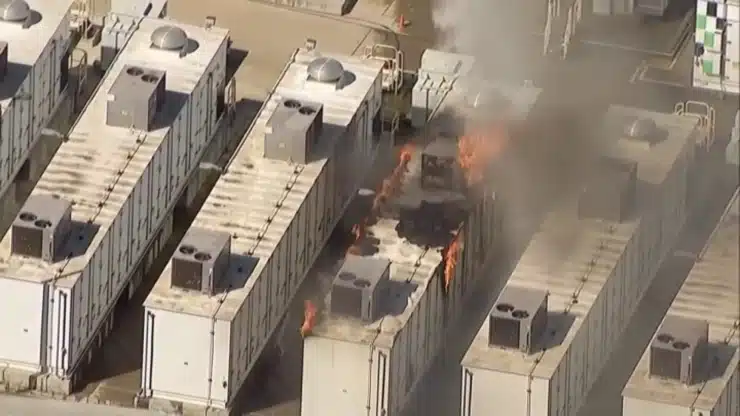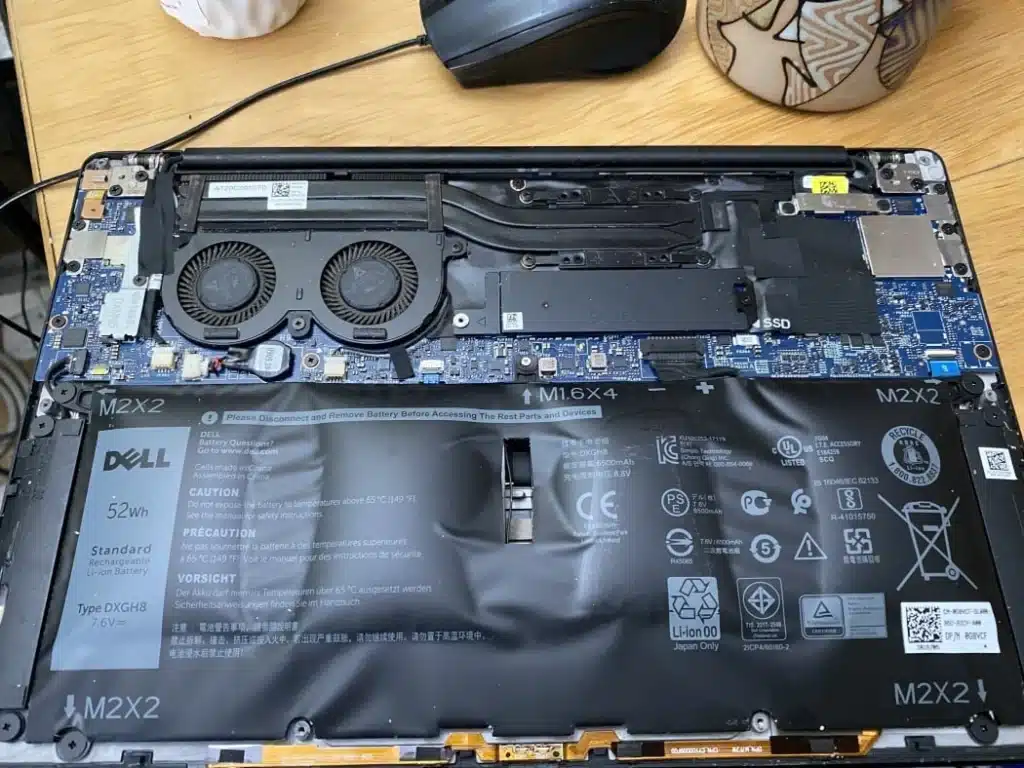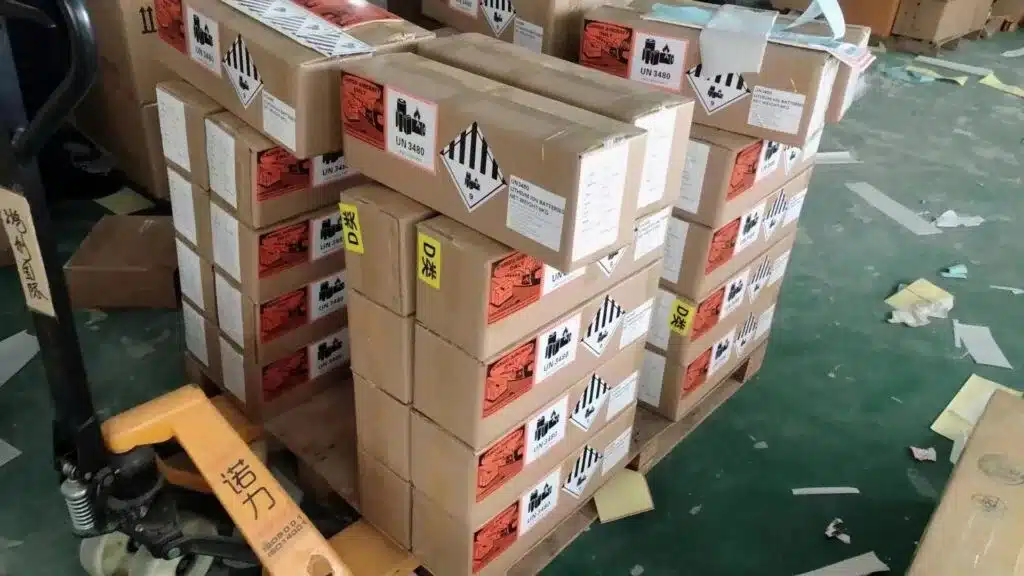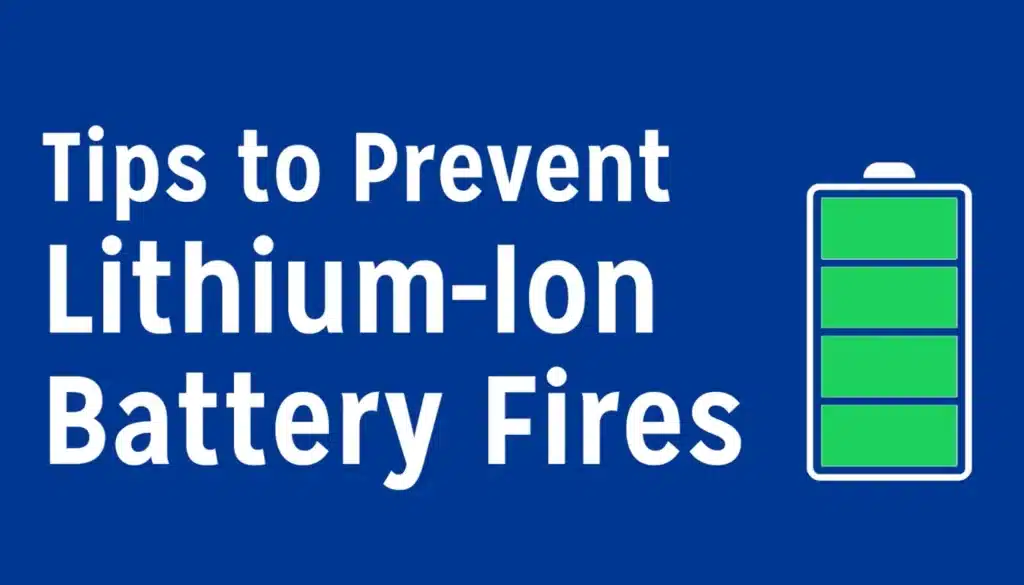Have you ever thought about how safe your batteries really are? From the phone in your hand to the power tools you use, batteries are everywhere. But when something goes wrong—like overheating, swelling, or even catching fire—it can be serious. That’s why battery safety matters more today than ever before.
In this article, you’ll learn what makes batteries risky, how to prevent problems, and what to do if a battery fails. We’ll keep it simple, so you don’t need a technical background. Whether you’re a user, an engineer, or someone who buys batteries for your business, this guide is for you. We’re Hongyitai, a lithium battery factory with 10 years of hands-on experience. We test, produce, and ship batteries every day—and we’re here to help you stay safe.
Table of Contents
ToggleUnderstanding battery risks

Batteries store energy. A lot of it. When that energy is released the wrong way—too fast, too hot, or into the wrong place—it can cause serious harm. That’s what makes batteries dangerous. The risk isn’t just from old or damaged ones. Even new batteries can fail if they’re poor quality, misused, or not built with the right safety features.
The most common battery hazards are fire, explosion, electric shock, and chemical leaks. A fire can start if the battery overheats or gets punctured. Some batteries can even explode under pressure or short circuit. Electric shock is also a risk—especially with larger batteries used in tools or electric vehicles. And if a battery leaks, it can release harmful chemicals that irritate your skin or damage nearby devices.
Lithium batteries carry higher risks than other types. That’s because they store more energy in a smaller size. If something goes wrong—like a short circuit or overheating—it can trigger a chain reaction called “thermal runaway” This is when the battery keeps heating up until it catches fire or explodes. It happens fast and is hard to stop once it starts.
Another serious problem is counterfeit batteries. These are fake products that look real but are made with cheap materials and no safety testing. You’ll often find them online at very low prices. Signs of a fake battery include no brand name, missing safety labels, strange smells, or very light weight. These fakes are dangerous because they may not have protection circuits or quality materials, making them more likely to fail.
Staying safe means knowing what to look for. The more you understand battery risks, the easier it is to avoid them. In the next section, we’ll look at the types of batteries and how their risks compare.
Battery types and their risk levels

Not all batteries are built the same. The chemistry inside each one affects how safe it is, how it performs, and how likely it is to fail. Some types are more stable than others. Let’s break it down.
Lithium-ion (Li-ion) batteries are common in phones, laptops, and electric vehicles. They’re powerful and lightweight, but they can overheat and catch fire if damaged or overcharged. Lithium iron phosphate (LiFePO4) is a newer type of lithium battery. It’s safer and more stable, with lower risk of thermal runaway. It doesn’t pack quite as much energy as Li-ion, but it’s a better choice for safety—especially in solar storage and electric buses.
Nickel-based batteries (like nickel-cadmium and nickel-metal hydride) were used more in the past. They’re less likely to catch fire, but they’re heavier and don’t store as much energy. Lead-acid batteries, like the ones in cars, are cheap and reliable. But they contain toxic materials and can leak acid if broken.
Battery risks also depend on where they’re used. Consumer batteries—like those in phones or power banks—need to be compact and protected from short circuits. Industrial batteries, such as those in forklifts or backup systems, are larger and may face vibration or impact. Grid-scale batteries used in energy storage must follow strict fire safety and ventilation rules. One failure in these big systems can cause huge damage. Learn further comparison of regular and industrail battery.
Next-gen batteries are still being developed, and they promise better safety. Solid-state batteries replace liquid inside with a solid, which lowers fire risk. Sodium-ion and flow batteries are also gaining attention. They may offer better safety and longer life, but they’re not widely used yet. These newer types look promising — but they still need more testing in the real world.
Knowing the 6 battery types helps you choose the right one for your needs—and manage its risks better.
Common causes of battery failure

Batteries don’t fail on their own. Most problems come from how they’re used, charged, or handled. When you understand these causes, it’s easier to avoid accidents.
Overcharging happens when a battery is charged past its limit. This can cause heat to build up and damage the battery’s inside layers. On the other hand, deep discharge means draining the battery too low. Doing this again and again can shorten its life and increase the risk of failure. Both problems can lead to swelling, overheating, or even fire. Study how to avoid lithium battery overcharging here.
A short circuit is when electricity flows the wrong way inside the battery. It can happen if the battery is damaged or has a weak spot in its design. Short circuits release energy too fast and can cause the battery to heat up or burst.
Physical damage is another big risk. Drops, hard impacts, or strong vibrations can break parts inside the battery. Even if the outside looks fine, the damage inside can build up over time and cause failure later.
Using the wrong charger or cable is also dangerous. Cheap or unapproved chargers may not have protection features. They can overcharge the battery or send too much current, leading to fire or shortened battery life.
In electric vehicles and smart devices, the Battery Management System (BMS) controls how the battery charges and works. But BMS software can be hacked. A hacker could make the battery overcharge or discharge too much, leading to unsafe conditions. Developers should protect BMS with strong software security and regular updates to prevent this kind of digital attack.
Small mistakes can lead to big failures. The good news is most of them can be prevented with the right tools and knowledge.
How to identify a dangerous battery

Some battery problems give off warning signs before things get worse. You just need to know what to look for.
Start with the obvious red flags. Swelling is a clear sign of danger. If a battery looks puffy or bloated, stop using it. It means gas is building up inside. That pressure can lead to a fire or explosion. Excess heat is another warning. A battery that feels hot while not in use—or charges too quickly—could be close to failing. And if you notice a chemical smell, especially something sharp or sweet, that could be leaking gas or electrolyte. Unplug it right away.
A quick visual inspection can help catch issues early. Look for cracks in the case, burn marks, or liquid around the battery. Also check for missing labels, dents, or loose wires. Engineers should check for signs of wear around connectors or solder joints. End users should avoid handling any battery that looks damaged.
So when should a battery be removed? If it’s swollen, leaking, or smells strange—take it out right away. Also remove it if it gets hot without being used or charged.
For higher-risk systems, smart sensors and AI can help. Some batteries now include built-in gas sensors, pressure monitors, and temperature alerts. These can spot problems like internal shorts or early signs of thermal runaway. Some AI tools even study battery behavior over time and warn users before failure happens.
You don’t need fancy tools to stay safe. Just a careful eye, a few habits, and knowing when something feels off.
Safe charging and usage tips

Charging a battery seems simple, but doing it the wrong way can be risky. Fires, overheating, and battery damage often start with poor charging habits.
First, choose the right place. Charge batteries on a hard, flat surface away from flammable items like paper, cloth, or curtains. Make sure the area has good airflow. Avoid charging near heat sources or in direct sunlight. Never charge a battery under your pillow or blanket.
Follow best practices for charging. Use the charger made for that battery. Don’t leave it plugged in for hours after it’s full. Overcharging can lead to swelling or overheating. If the battery gets hot during charging, unplug it and let it cool down. Don’t charge damaged or swollen batteries at all. Learn how to safely charge lipo batteries with details.
Always avoid cheap or fake chargers. They often skip important safety features like overcharge protection. A low price might seem like a good deal, but the risks are high. Counterfeit chargers can send too much power or fail to stop charging, both of which can damage the battery or cause a fire. Stick with chargers from trusted brands or your battery’s manufacturer.
Many modern batteries include a Battery Management System (BMS). This is a small circuit that watches over charging and discharging. It helps prevent overcharging, overheating, and short circuits. In some systems, BMS will even shut off the battery if something goes wrong.
Charging safely is one of the easiest ways to protect yourself and your devices. A few simple steps can make a big difference.
Battery storage and transportation safety

Storing and shipping batteries the right way is key to keeping them safe and working well. Poor storage can lead to leaks, swelling, or fires—even if the battery isn’t being used.
To store batteries long-term, keep them in a cool, dry place. Avoid direct sunlight, heat, or freezing temperatures. The ideal storage temperature is between 15°C and 25°C (59°F to 77°F). Batteries should be stored at around 50% charge—not full, and not empty. This helps reduce stress on the battery cells.
Humidity and airflow also matter. Store batteries in a place with low moisture and good ventilation. Avoid sealed containers that trap heat. Make sure the storage area is clean and free of metal tools or other things that could cause a short circuit.
When transporting batteries, safety rules change depending on the type and size. For air travel, lithium batteries must meet strict limits on weight, charge level, and packaging. UN38.3 certification is required for most lithium batteries before they can be shipped by air, land, or sea. This test checks the battery’s ability to handle pressure, vibration, shock, and heat.
Other safety standards may apply depending on the country. Always pack batteries in strong, labeled containers, and avoid mixing them with metal or other batteries.
Proper storage and transport protect not just the battery — but also people and property around it.
Emergency situations: what to do when things go wrong

If a battery starts smoking or overheating, unplug it right away and move it to a fire-safe area if it’s safe to do so. Don’t touch it with bare hands. Leave the room if needed and keep others away.
If the battery catches fire, use a Class D fire extinguisher (for metal fires) or a dry chemical extinguisher. Never use water on a lithium battery fire—it can make things worse.
For leaks or ruptures, wear gloves and avoid direct contact. Use baking soda to neutralize spills from alkaline batteries. For lithium batteries, ventilate the area and place the battery in a fireproof container.
Be aware: lithium-ion fires can reignite hours later due to heat trapped inside. After a fire, place the battery in sand or water (inside a sealed metal container) and leave it outside, away from flammable materials. Monitor for heat before final disposal.
Battery disposal and recycling
Throwing batteries in the trash is dangerous. It can lead to fires, leaks, and environmental harm. When batteries end up in landfills, they may release toxic chemicals into the ground and water.
The wrong way to get rid of batteries is to toss them in household garbage or burn them. This is illegal in many places and can cause fires during trash collection or at waste sites.
Most countries offer safe and legal disposal options. Look for battery recycling points at electronics stores, local recycling centers, or community drop-off events. Always tape the battery terminals before disposal to prevent short circuits. Find sustainable lithium battery disposal and recycling with details.
Lithium batteries need special care when recycled. Take them to certified recycling centers that know how to handle them properly. These centers separate the parts safely and recover materials like lithium, cobalt, and nickel.
Never throw batteries in the regular trash—even small ones. The risk isn’t just chemical—it’s fire, too.
Also, watch for battery aging. Over time, heat, deep discharges, and long storage cause batteries to weaken. This is called cycle life and calendar aging. Old batteries are more likely to fail. If a battery shows signs of swelling, heat, or damage, it’s time to retire it—even if it still works.
Preventing battery problems before they start

The best way to avoid battery problems is to stop them before they happen. That begins with good product design. Devices should include space for battery swelling, proper cooling, and short-circuit protection. A well-designed product reduces the risk of overheating or damage.
Quality control is also key. Factories should run full end-of-line testing, checking each battery’s voltage, capacity, and safety circuits. This step helps catch weak or faulty units before they reach the customer.
Trusted batteries come with proper certifications like CE, UN38.3, UL, and IEC. These tests check for issues like pressure resistance, vibration safety, and thermal stability. They help ensure the battery is safe for transport and daily use.
Importers and distributors should check for valid test reports, clear labeling, and a known manufacturer. Avoid suppliers who won’t provide documents. A few extra checks can prevent big problems down the line.
Training and best practices for safe handling
Safe battery handling starts with clear guidelines. Workers and technicians should wear gloves, avoid dropping batteries, and follow storage and charging rules. Batteries should never be opened, crushed, or exposed to heat.
To reduce risks, companies should train teams on safety protocols. This includes how to spot danger signs, respond to emergencies, and use personal protective equipment (PPE). Training should be hands-on and repeated often.
Any battery incident, even a minor one, should be reported and documented. Tracking problems helps prevent future ones. It also supports quality checks and product recalls if needed.
Right now, global battery safety standards are limited. Rules vary by country, and many end users have no safety training at all. Installers and buyers often don’t know how to check if a battery is certified or safe. We need better education and stronger rules to close these gaps and keep people safe.
Conclusion
Battery risks aren’t always easy to spot—but they’re real. Fires, swelling, and leaks often happen without warning. Whether you’re a buyer, engineer, or everyday user, one small mistake can lead to big damage.
Remember the basics: charge safely, store correctly, and inspect your batteries often. Never ignore signs like heat, smell, or swelling. Always use certified products and trusted chargers. The cost of ignoring battery safety could be property damage, lost products — or worse.
This guide gave you the answers you searched for: what makes batteries risky, how to avoid problems, and what to do when things go wrong. Now you know how to protect yourself and others.
If you need help choosing safe batteries or want expert advice, Hongyitai is here to support you. We’re a lithium battery factory in China with 10 years of experience. We offer tested, certified, and reliable battery solutions to meet your safety needs.
